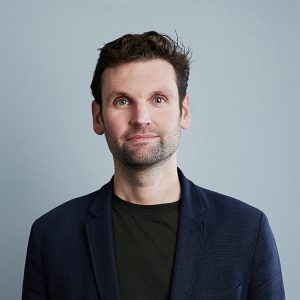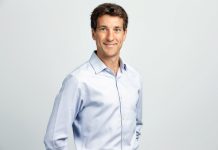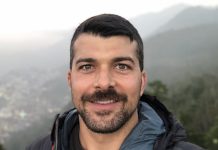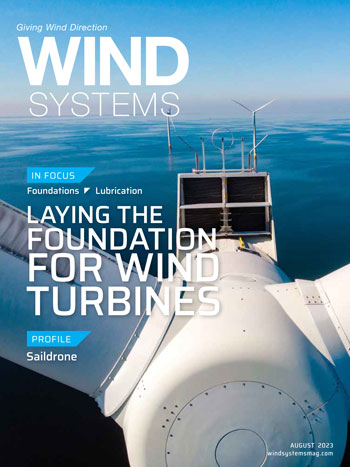What is your role with K2 Management?
My role at K2 is to lead our business units: analysis and due diligence. What we do on the analysis side is focus on yield and performance forecasting and performance analysis for both pre-construction and operational renewable-energy projects. And for K2, that means offshore wind, onshore wind, and solar, predominantly. We develop our own software and tool sets, etc., to actually undertake those analyses for future and existing projects.
On the due diligence side, we have two main areas of focus: One is the acquisition due diligence, where we’re working in M&A processes as a technical adviser, predominantly working on the buy side, supporting potential bidders and potential investors into projects.
On the lenders technical advisory side, we’re working with prospective lenders, export credit agencies, etc., who are expecting to finance renewable energy projects. Most of our work in that space is in offshore wind, but we also do a fair amount of onshore and solar work there as well. My role is to lead that department of roughly 40 people located in various locations around the world. We have one or two in North America; the bulk is in Europe, but we also have a growing team in the Asia Pacific area as well.
What does K2M do for offshore wind, particularly in the U.S.?
Within my business unit of due-diligence analysis, there are two further business units: projects and consultancy. Across those we provide relatively holistic technical services for the development, construction, and operation of renewable-energy projects.
In the U.S., our work so far has been mostly focused on our project management and engineering services, where we’re appointed by clients to come on board and assist them in the development and construction of offshore wind farms. The most predominant position we have is on the U.S. Wind MarWin Project, where we’ve gotten a fairly full owners engineer scope, and we’re taking on some fairly significant presence within the package management, managing some of the engineering services, and also some of the procurement activities. We also have our origination, which is somewhat unique to the U.S. market. We have an origination service where we’re actually out looking for potential development sites and working with clients to actually do the very early stages of project development.
What do you feel is the status of offshore in the U.S. so far?
The U.S. market, as seen from the U.K. — we’ve been somewhat an observer of the U.S. market over the last few years — we’ve seen it have some fits and starts, and perhaps even some false starts in the early days. There’s clearly, at the moment, a lot of international interest in developing the projects. The momentum is probably higher than we’ve ever seen, and the regulatory environment is maturing. Project leaders now understand the process of actually developing the project through the regulations — things like the Inflation Reduction Act, etc. At a very high level there are positive moves from government and policymakers to encourage more projects.
There are a lot of new projects being fed into the system, and not quite so many projects exiting the system, if you like, that are actually becoming constructed and operational. The elements that are still challenging are probably grid connections, interconnections, and also supply chain issues. There are still a few question marks about how we really deploy offshore wind at scale in the U.S. Obviously, it’s a relatively protectionist market for good reasons, and there’s a lot of focus on developing the domestic supply chain, but that takes time. It’s also a little bit chicken and egg. There need to be projects ordering equipment for suppliers to make investments, and suppliers are reticent to make those commitments before the capability is there.
It’s a similar issue that we see in Europe, and I do think the U.S. can benefit from the pace and the maturity of development that has been achieved in Europe over the last 20 years. I don’t think the U.S. needs to go through that entire cycle. I think it will be a faster development process to get to bigger projects.
What is the lender’s technical advisory (LTA) process, and what is its role in offshore wind development?
This is something that is a key part of my department’s operations. Essentially, what we’re doing is we’re advising lenders on the risks of lending to offshore wind projects. The process is relatively straightforward at a high level. We essentially will join the project early on in the development phase, and we will conduct what we call a bankability review, where we’re working almost bilaterally with the project. There are no lenders involved at this stage. There may be the financial adviser, but more or less, we’re giving the project our early opinion on the likely development risks and technical risks that the project should be aware of.
And then, there’s a process of the project assessing our conclusions and taking some action, so we’ll do a more detailed due diligence review of the project, and that essentially produces our main output, if you like, which is the LTA report, provided to lenders at bank launch. Bank launch is essentially the formal start of the financing process. It’s when lenders are alerted to the opportunity, and they receive the materials and start to conduct their assessment of the opportunity. And at that point, we shift our focus a little bit. Rather than working closely with the client, we then flip over to become the lender’s adviser. They’ll ask us questions, and we’ll discuss with them on the risks and potential mitigations that we’ve identified and the overall prospect.
Through that process, we then hope to reach financial close when lenders are mandated and the financing terms are agreed to. At that point, the project can achieve financial close, and we move into the construction phase.
That process can take anywhere between one and three years. Obviously, depending on the market, depending on the complexity of the project, and depending on the number of lenders and ECAs involved, etc., that can shorten or lengthen that process. But more or less, that’s what we work through. We’re typically engaged for the construction phase and sometimes the whole debt term to provide construction and operations monitoring as well, so lenders continue to be aware of what’s going on in the project.
In the U.K., for example, the debt term on the project financing is typically pegged to the CFD term, which is 15 years, so we could be involved in the project for 20 years, all told, from the pre-financial close phase through construction, and then the 15 years of operation. We have quite long-term engagements, but the monitoring phases tend to be lower effort. We’ve got a number of those projects ongoing in the background. The pre-financial close phase is much more intensive. We try to only be doing a couple of those at a time from a resource perspective.
Can you talk about any of the projects that you’re involved with?
I suppose our experience really started maybe five or six years ago in the U.K. where we’ve acted on Moray East, Triton Knoll, and then subsequently, Dogger Bank A, B, and C, where we’ve acted as lenders adviser. We’ve also worked in Germany on the Kaskasi and Hohe See projects, although neither of those actually ultimately were financed. The projects decided to fund those off balance sheet, but at least we undertook most of the majority of our role.
We recently began expanding into APAC. We’ve got a mandate at the moment in Poland on a Baltic Power project, which we’re hoping will achieve financial close within the next few months. And then with Hai Long in Taiwan, we’re very close to financial close on that project as well.
We’re following the main markets that K2 as a whole is involved with. We haven’t been appointed on a U.S. project yet, but we’re hoping to break into that market from an LTA perspective. We have a lot of experience from our owners’ engineering and project management side. So, there are a few incumbents in the market in the U.S. who are sweeping things up for now, but we hope to break in at some point.
What are some of the necessary steps to complete before any construction can begin?
One of our differentiators is we try to take a very pragmatic view of the interface between the project development cycle and the financing process, because every project is different, and we try to make sure we tailor the process to the projects. That said, there are a few prerequisites that we would expect to be achieved before the financing can be concluded.
We’d expect the engineering of the project to be at a reasonable level of maturity, so perhaps the detailed design is not fully complete, but the design and the foundations, electrical system, etc., should be pretty mature. On the turbine selection, we’d expect that during the turbine certification process, the turbines have at least achieved a provisional type certificate and are on track to achieve their full type certificate within the expected timeframe, and there are appropriate commercial protections for that within the TSA.
And to talk about the contracts, at the point of financial close, all the big ticket, main supply contracts need to be at a position that they can be executed or virtually executed at the point of financial close. At that point, we typically see the main contract signed, and the full construction phase can then start. Some of the more operational contracts we’re maybe a little less sensitive about, like the operations and maintenance agreements, asset management agreements, etc., can maybe be a little bit less mature, but at least we should have a pretty clear picture of what those contracts are going to contain.
Most offshore focus is on the East Coast. Do you see West Coast wind projects ramping up any time in the future?
I suppose there are a few places around the world that are particularly suited to fixed-bottom offshore wind. I think the North Sea is a good example, so is the East Coast of the U.S., where there’s relatively shallow water and relatively benign climactic conditions — not withstanding various hurricanes and things. They’re at least predictable. Those are the places that have obviously been more quickly developed.
Places like Japan, places like the West Coast of the U.S. where there isn’t this expansive shallow water and we go into deep oceanic water relatively quickly, that will require floating technology to develop.
We certainly see a lot of pace in the development of floating technology. I think it’s still significantly behind fixed-bottom, maybe not so much in the fundamental technology, but around the understanding strategy about how to effectively operate the projects. There are still quite a few question marks about how to optimize the operations and probably construction as well. Those things still need to be worked through.
But that said, there are a lot of projects in development. I think our view, coming back to the LTA point, is that the projects are fundamentally bankable. We’re mandated on a project in South Korea, which will be a pretty large floating offshore wind project, which should be constructed toward the end of the 2020s. We’re going full ahead with the financing process of that project, and there are others in the pipeline as well.
So, I fully expect floating offshore wind will become a viable technology. I suppose I’m less sure of whether it will become competitive with fixed-bottom offshore wind. I think there are competing opinions on that, but at least it’s an appropriate generation technology in locations where other options don’t exist. There’s certainly a space for floating offshore wind in the marketplace.
In terms of accessing deep water, it stands to reason that the further offshore you go, typically the higher and better the wind resources, so you’re accessing this better wind resource. Obviously, there are some questions about accessibility and how you actually get the power to shore, but those things are in the works. But fixed-bottom technology exists; it’s ready to deploy, and there’s still an awful lot of seabed that could be developed with fixed-bottom. So, I expect we’ll see them running in parallel. I expect fixed-bottom will remain ahead of floating for quite some time, but I think floating is definitely a serious prospect.
Anything else you’d like to mention that we didn’t discuss?
With our K2 team, we pride ourselves and we focus on adapting our processes to a project’s requirements and not being too formulaic and too fixed on our view of what’s bankable and what’s not bankable. We’ve found that we’ve had to be quite flexible and adaptable in considering new technologies and new approaches that projects require to be economic but that lenders might see as slightly risky. Bridging that gap is something that we feel pretty experienced in. To put that in U.S. context, we’re very interested to bring that experience to the U.S. market. We have some familiarity with the regulatory landscape, and the roots to market, and how that is a bit different in the U.S. than it might be in the U.K. or Germany or Taiwan, so we think we’re in a strong position to bring that expertise as these projects get deployed.
More info www.k2management.com































